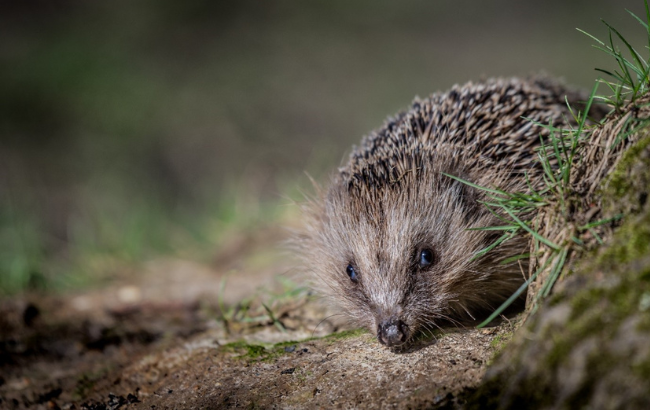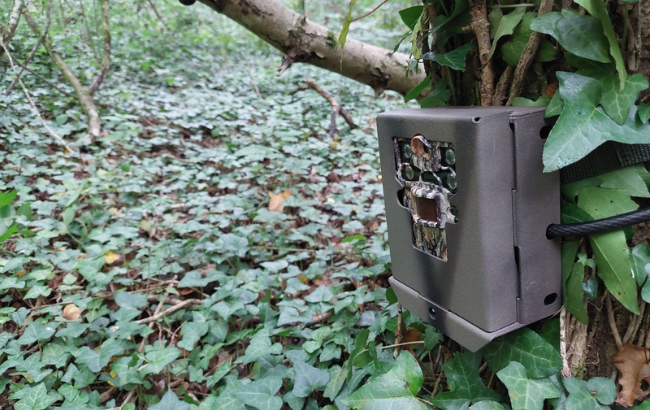
Hedgehogs, our beloved garden visitors, are in decline.
Surveys in the latest State of Britain's Hedgehogs report estimate that hedgehog numbers have decreased by up to 75% in rural areas since the turn of the century.
I’m Danielle and I work as a Natural England Higher Officer in Species Recovery and Reintroduction in one of the area teams, which includes collaborating with a variety of partners to achieve nature recovery.
An invaluable contribution to Defra’s work is also made by non-government organisations like charities, universities and businesses, who use their specialist expertise to focus on particular habitats or species.
One example of this is the National Hedgehog Monitoring Programme.
Hedgehogs are treasured in their own right, but they are also an indicator species. This means that a decline in their numbers indicates a broader decline in the health of the natural world. And the natural world, in turn, supports our food systems, provides clean water, and helps regulate our climate.
Hedgehog numbers have traditionally been monitored by counting hedgehog road casualties and using these as an indication of changes in the wider population.
These surveys give a snapshot of information on the location of hedgehogs at the time, but don’t monitor how that population is faring, meaning we won’t know until it’s too late. There is little evidence to explain the reasoning behind their decline.
The National Hedgehog Monitoring Programme, launched this year, seeks to change that.
World-first monitoring
The Monitoring Programme is trialling a world-first combination of trail cameras, artificial intelligence (AI) and help from volunteers to establish robust hedgehog population estimates.
The images captured are sorted using AI algorithms, which remove images of humans and vegetation. Volunteers then review the remaining images and classify them depending on species shown.
Once classified, the images are analysed to reveal population numbers. This could also uncover information on population density, different habitats, and changes to populations over time.
This information will be vital in producing insights into the factors causing hedgehog population decline. It will enable conservationists to implement practical conservation measures to address this challenge.
The Monitoring Programme is being piloted in multiple locations across the country, with an initial target number of 40 survey sites by the end of the project.

Working together to reverse hedgehog decline
The groundbreaking project is being delivered by a variety of organisations, with People’s Trust for Endangered Species and The British Hedgehog Preservation Society coordinating the programme.
To bring together expertise from across England partnerships with groups have been formed, including Nottingham Trent University (NTU), Zoological Society of London, London Hogwatch, MammalWeb and Durham University, with co-funding provided by Natural England.
The East Midlands has been chosen as one of the target locations, with NTU leading the way in Nottinghamshire. The university is acting as a ‘hub’, which means they are responsible for co-ordinating the installation of cameras in up to 5 sites in the local area. These sites will encompass a variety of habitats including farmland, woodland and an urban park.
Connecting with the university has allowed me to see the project develop first-hand in my area and witness the first steps towards helping hedgehogs, making a local contribution to a national effort.

How you can help
This project will be invaluable in gaining information on the status of hedgehog populations in England. It will provide evidence to support future long-term conservation efforts.
The project’s success is underpinned by its volunteers, who can take part from the comfort of their own homes.
Images from the first year of the programme have been uploaded to MammalWeb, a platform to collate, validate and curate camera trap data. Help is needed to classify the animals in these images.
If you’re interested in getting involved, please visit the National Hedgehog Monitoring Programme website. Free training and ID guides are available online to help you volunteer.
You can also help hedgehogs by creating safe environments in your garden or allotment by leaving a corner as a wildlife sanctuary. You could:
- collect materials like logs and leaves that hedgehogs can use to build nests and shelters
- provide clean drinking water and consider scattering food to encourage natural foraging
- eliminate man-made hazards like pesticides and slug pellets wherever possible
By taking these steps, you can support wildlife and enjoy the pleasure of observing hedgehogs in your area.
16 comments
Comment by Laraine Lambie posted on
I have been feeding hedgehogs in my garden for 23 years and have four cameras that see what they get up to at night. I have four years of footage but unfortunately I live in Livingston West Lothian and there are no studies in Scotland that can use my information
Comment by jessicaeverett posted on
Hello Laraine, thanks for your comment. It's great that you have so much footage.
I've just had a quick look online and came across 'HogWatch Scotland' where you can submit sightings. Might be worth a look. There's also 'The BIG Hedgehog Map', which covers the UK.
P.S. I tried to add links to my comment and made a pig's ear of it - hopefully you can find them online!
Best wishes,
Jess (the blog team)
Comment by Dorothy Grassby posted on
I am so blessed to have 3 hedgehogs in my garden
Comment by jessicaeverett posted on
Fantastic! That's great to hear, Dorothy.
Jess (the blog team)
Comment by Lisa posted on
I’ve had many hedgehogs in my garden over the years this year only one baby , but saying that more of my neighbours are now putting food out for hedgehogs so that’s good.
Comment by Tracy Craddock posted on
We have had a mother with babies before, but looks like we have a male living under our shed at the moment.
Comment by Jane Gorman posted on
Hi, I support feed my hedgehogs that visit since 2021 I recognise the 10 hogs that visit by camera, there's been 15 different individuals after researching the dates when they first visit to when they left the garden, it's been no longer then year & a half depending on weather & food, now on my update the garden been empty, but hopefully when the autumn comes they might find their way back
Comment by pollywight posted on
That's great Jane, hopefully they return this autumn!
Thanks,
Polly (blog team)
Comment by Jayne Manley posted on
I live in Norwich, on the ring road, and last year I had at least 10 hedgehogs of varying sizes, including 4 hoglets, visiting my garden every evening and during the night
Comment by Glena posted on
I have had hedgehogs for years. I have a house and I feed them too.
Comment by Margaret Faulkner posted on
We have 2 feeding boxes and 3 hibernation boxes and water bowls. We have 2 or 3 visiting this year. There are babies about but only know by size of poo. Did see a small one the other night, but it quickly disappeared. We have a camera on feeding boxes to watch them at night. We supplement their feeding with kitten biscuits chicken flavour which they love.
Comment by pollywight posted on
Thanks Margaret, that's lovely to hear!
Polly (blog team)
Comment by Helen posted on
Tragically in our garden alone in the 6 years our dogs have killed at least 6! I have rescued 3 others - but we need safe places for releasing them to - and now that I know badgers predate them I now think we need a badger map!
Comment by Rebecca Slack posted on
It is lovely to read all these comments and observations. Did you know that you can record all your wildlife observations, not just hedgehogs, with your local environment record centre? They would all welcome your observations which will be used to inform wildlife decision making at a local/regional level. Find your local environment records centre here:
https://www.alerc.org.uk/lerc-finder.html
Comment by David Amos posted on
How protected are hedgehogs from housing developments destroying their habitat?
Comment by jessicaeverett posted on
Hello David,
You might be interested in reading some of our recent blog posts about development and nature. If you go to our homepage (defraenvironment.blog.gov.uk) you can see these posts. You could also click on the blue 'Land Use' tag underneath relevant blog post titles to filter the posts.
Thank you,
Jess (The Blog Team)